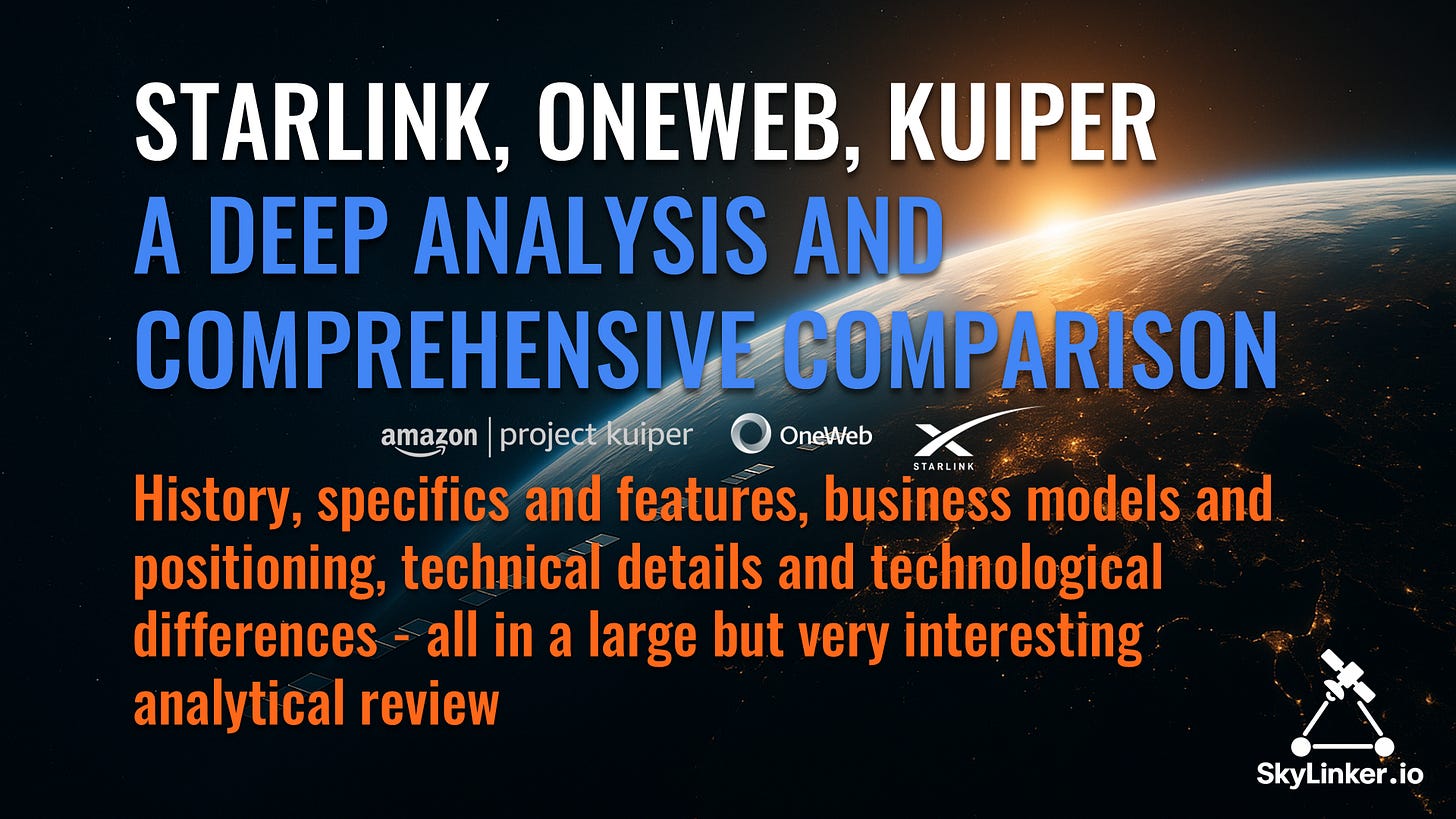Starlink, OneWeb, Kuiper - A Deep Analysis and Comprehensive Comparison
History, specifics and features, business models and positioning, technical details and technological differences - all in a large but very interesting analytical review
This extensive analytical article contains a deep analysis and comparison of the current leaders in low Earth orbit (LEO) satellite communication - Starlink, OneWeb, and Kuiper. A detailed review of their features, history, and specifics not only provides a complete picture of them but also an understanding of why comparing them solely by the number of …



